PES 2017 tips: help for FIFA players switching over to Pro Evo
Joining the dark side! How to make the switch and play for the opposition… (If you haven’t heard, PES 2017 borders on the extraordinary.) Professional games guide writer James Price provides assistance for anyone making the jump…
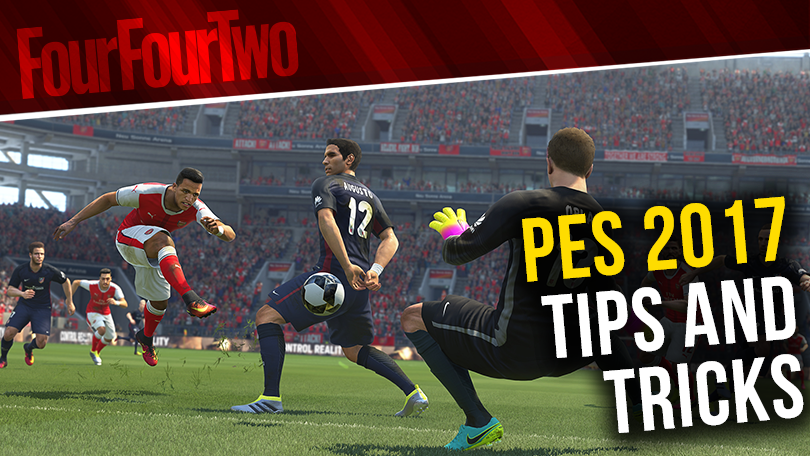
It’s perhaps a little scruffy to behold at times (especially the Xbox One version), is often less than user-friendly, and probably won’t make a brilliant first impression if you’re attuned to FIFA’s customary polish. Stick with it, though, and PES 2017 is one of the most remarkable football games in many years.
It’s a little too early to be making definitive statements on its relative position in subjective all-time lists, but its robust and authentic simulation of real-life player behaviours and team tactics makes it a genuine contender.
With FIFA 17 a fortnight away, and with PES 2017 beguiling many players (seen our review of the brilliant PES 2017 yet?) with the sheer variety and substance of the stories that unfold in its match engine, we imagine that more than a few FIFA diehards are casting a few lingering glances in the direction of Konami’s latest. For that reason, we’ve put together this feature to help anyone who takes the plunge to configure the game and start enjoying PES 2017 in double-quick time. It’s more of a primer than a comprehensive guide, but it should be enough to get you up and running – or to whet your appetite even further if you’ve yet to commit.
It’s not a matter of choosing one game or the other. This isn’t like club teams, where you’re obliged to follow the side that your family, friends or impressionable glory-hunting ways as a youngster might have chosen for you until your dying breath. Based on our impressions of FIFA 17 to date, it may be that this is the year that mainstream gamers with an interest in football will be more likely to play both FIFA and PES for the full twelve months, and needless partisan bullshit or parsimony be damned.
It’s really not that that difficult to jump from FIFA to PES
And here’s the thing: it’s really not that that difficult to jump from FIFA to PES. The differences can be startling or jarring at first, but the shared genome that has evolved over years of both development teams cribbing each other’s best ideas means that it’s not like learning an entirely new game. But when things really start to click after several matches – well, that’s when PES 2017 really starts to shine as a truly distinct and engaging football simulation.
After all, what do you have to lose? If you buy a disc copy and PES doesn’t work out, you can trade it in towards FIFA in less than two weeks.
Controller & Configuration Settings
Get FourFourTwo Newsletter
The best features, fun and footballing quizzes, straight to your inbox every week.
Let’s start with the basics: buttons and menus. Get these right and you can focus on what’s happening on the pitch, rather than the mistakes and misunderstandings that instinct and flailing sausage fingers conditioned by years of FIFA might lead to.
Bizarrely, the critical Edit Personal Data and Command Configuration screens are not easy for new players (the very people who might need them most) to locate. These well-hidden menus should be your first port of call before you set foot on the pitch, as there are a handful of fairly significant settings that FIFA players should change in advance. From the main menu, go to Extras > Options > Personal Data Settings, then select Data 1 to reach the Edit Personal Data page. To get to the same screen during a match, enter the pause menu and choose Select Sides, then press Square Button/X Button.
Select Command Configuration first. If you are likely to jump back and forth between FIFA and PES, it makes sense to have a fairly uniform button setup for both games. The off-the-peg 'Type 2' option in the Command Configuration menu is pretty close to FIFA, but fails to take into account that the Special Controls button actually needs to be mapped to L2/Left Trigger to feel comfortable for regular FIFA players. You can, however, use the 'Custom' option to swap Special Controls to L2/Left Trigger, with Manual Controls moving over to R1/Right Bumper.
Once you’re happy with your changes, back out to the Edit Personal Data screen and pay attention to the following settings:
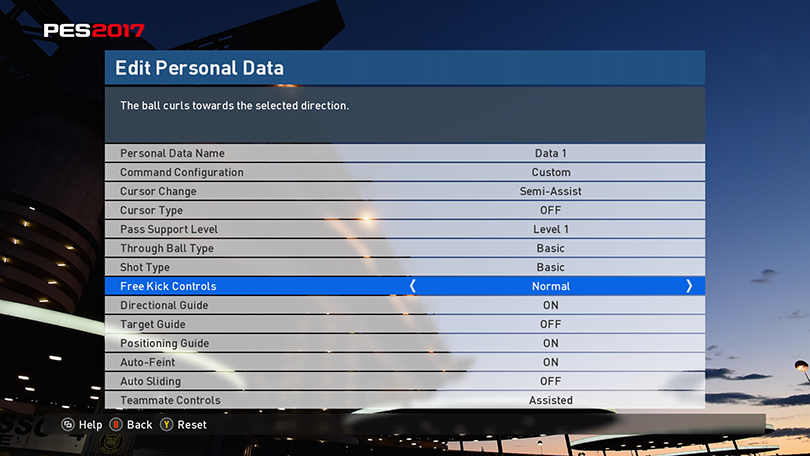
- Switch the 'Free Kick Controls' setting to 'Normal'. PES 2017 defaults to the 'Reverse' setting, where the ball curls away from the direction that you hold. While this more realistic method has its advocates, it just feels plain weird if you’re accustomed to FIFA’s straightforward approach to set pieces.
- Toggle 'Auto Sliding' to 'OFF'. This prevents players on your team from going to ground in an attempt to automatically intercept or block the ball. While it’s not a common occurrence if left on, it can feel a little intrusive when it happens.
- If you’re a real purist, you may also wish to switch 'Auto-Feint' to 'OFF'. However, we’d recommend that everyone else leave it on. When active, this feature makes skilful players occasionally incorporate minor flourishes of flair as they move and turn. It doesn’t impede their responsiveness, and helps to make your more technical players feel more distinctive.
Control Notes
While you can select the 'Help' option on the pause screen to access a full list of commands and assorted game tips, there are a few buttons that warrant special attention:
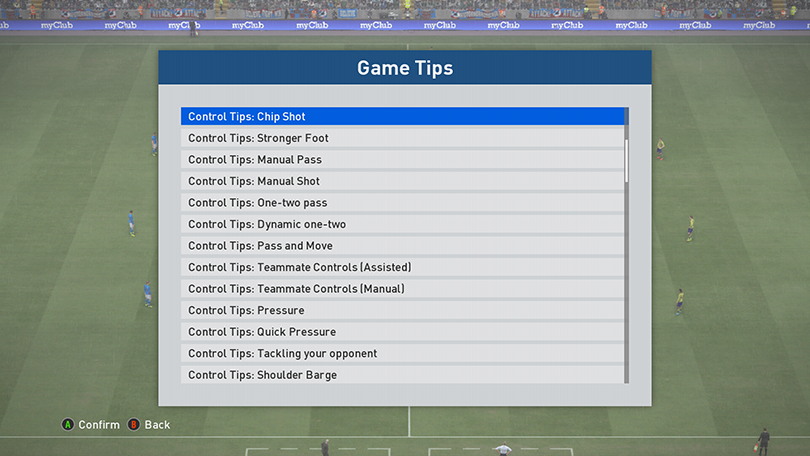
- Just as L2/Left Trigger invokes numerous contextual commands and modifiers in FIFA, the Special Controls button (R2/Right Trigger by default) is the Swiss army knife of PES 2017. From dribbling support (including lateral motion, close control and drag-backs) to jockeying in defence, this button adds texture and technique to your play. You can release Left Stick and hold it to turn on the ball and face your opponent’s goal, or tap it during a pass to make the player follow up with a forward run, or hold it while shooting to make a placed shot. Almost every magical moment on the pitch will involve this button in some way, so it’s a good idea to study the in-game command list to learn how to get the most out of it.
- The PES 2017 tackling system differs from its FIFA equivalent. You can still hold X Button/A Button to automatically close down opponents, holding the run button as well for greater speed but lower precision, but – as in FIFA – more capable opponents will often evade this style of straightforward defending. To perform a manual tackle, barge or lunge, double-tap the button when in range. This brilliant (and soon instinctive) feature facilitates everything from nicking the ball from an opponent with surgical precision, to bowling over tricky wingers with a towering centre-back as the home crowd howls their indignation. Player strength and body position relative to the ball have a profound effect on the success and failure of tackle attempts.
- Unlike FIFA 16, liberal use of slide tackles will not lead to clean and uncomplicated transfers of possession. Employ them sparingly until you get used to the mechanics, then gradually incorporate them into your play when they are appropriate. Because sliding tackles are harder to aim than in FIFA, there’s a profound satisfaction to be had from stabbing the ball away from a striker’s feet as he’s poised to pull the trigger. Referees will (rightly) punish clumsy or violent lunges, though making contact with the ball will usually mitigate the severity of their response.
If you’re smart, and have a player with quick feet, you can bait for free kicks and cards from slide tackles and clumsy challenges from aggressive opponents by making astute last-second turns.
- While running, double-tap the sprint button to knock the ball ahead and gain a little extra speed. The differences in pace between the most ponderous centre-back and a fleet-footed winger are less pronounced than you might be used to; there’s an evident level of artificial “rubber-banding” to ensure that matches don’t devolve into reductive bouts where the fastest players utterly dominate proceedings. Pace has its place – but it’s just one of many tools that you’ll need to use to break down stubborn defences. You should also note that savvy opponents (including the AI on the Top Player and Superstar difficulty settings) will constantly pinch the ball if you attempt to run everywhere.
- The basic functionality of the ‘Teammates Pressure’ button is much the same as it is in FIFA, but there’s an extra feature: double-tap then hold the button to have two or even three players close down the man in possession. This naturally opens up space for your opponent to exploit if it fails, but can lead to rapid and effective transitions if you pick the right moment to strike.
The Importance of First Touches
With AI defenders tracking opponent movements and covering passing lanes with greater intelligence than ever before, and human opponents given comprehensive options for setting up similar defensive tactics, one of the biggest stumbling blocks for new PES 2017 players will be coming to terms with just how vital it is to use first touches to not just create space, but to maintain possession.
In short: elementary footwork matters. You can’t just turn and run towards your opponent’s goal every time. If you study the two videos that follow, you’ll see two typical examples of build-up play on higher difficulty levels against the AI. If you intend to break down defences and cope with aggressive pressing, you’ll need to vary your approach. Every time you play the ball you should be looking to see where the next pass might go in advance, then turning accordingly. It’s a very different footballing philosophy from the exuberant kick-and-rush of recent FIFAs, and takes a little time to get accustomed to.
Above all else, if you’re struggling to make an impression on a match, just focus on your first touches – and things should improve from there. We can’t understate just how pivotal these small but significant moments truly are.
A typical attacking move. Eriksen’s first touch gives him just enough space to escape a three-man press in the centre of the park. Later, Dembele’s turn as he receives the ball opens up a nice angle for a great pass to Kane.
It’s not Kane’s pass that makes this goal, but Chadli’s first touch. If he immediately attempts to pivot and shoot, our money is on the defender to win the ball, or at least block the effort. Instead, his body position as he traps the ball forces the defender to make a decision – and that step forward to get tight enables Chadli to finish decisively after a smart turn.
Create Space, Look for Runs
While the type of match you experience will obviously vary in accordance with the tactics employed by both teams, you need guile and craft to break down sides who defend deep and attack on the counter. It’s vital to probe defences, varying the speed that you move the ball around, and switching the point of attack as you search for space or a killer run. If there are no obvious avenues of attack, never be reluctant to knock the ball back and start again.
Conversely, there are times when allowing an opposing team to really develop a move can work in your favour if they are committing additional men forward. As long as you keep things tight and present no obvious openings, a turnover in possession should lead to a quick counterattack.
You can instigate vital off-the-ball movement when in possession by holding L1/Left Bumper and directing the Right Stick towards the player that you would like to make a forward run; release the stick to activate it. From patient build-up to lightning counters, this function adds another dimension to your play.
An example of a manual player run. Kane is in a useful position as the counterattack develops, but it’s the use of the manual run instruction (note the point where the tell-tale blue cursor appears above his head prior to the pass) that moves him into a prime position between the two defenders. The first-time finish from just outside the box is sweet, but plays to his strengths: Kane is unlikely to slalom past two capable centre-backs in this situation.
Get To Know Your Players
In addition to the basic (and fairly straightforward) numerical attributes that define their prowess on the pitch, every player can possess their own set of special aptitudes and abilities. To find out what these are, enter a player’s information screen and cycle through the pages until you reach the Skills/Playing Styles tab. A centre-back might have the Heading trait, which improves their ability to win aerial contests (and the quality of each header), while a playmaker could have the One-touch Pass or Weighted Pass perks, improving their ability to dictate the flow of attacking moves and play killer final balls.
Most notably, and differing quite radically from FIFA’s approach, many of the most spectacular and replay-friendly skill moves can only be performed by players who have that ability assigned to them. It’s not enough to simply know the button and stick commands: you have to be sure that the player has that particular piece of flair in their locker.

Some player skills are not manually activated, but instead occur automatically when contextually appropriate. Attempt to cross with Erik Lamela’s weaker right foot under certain circumstances, for example, and he’ll automatically break out his crowd-pleasing knack for the Rabona.
Experiment with Tactics and Formations
We heartily encourage new players to just get their hands dirty and experiment: it’s the best way to learn.
Your choice of base formation has a tangible effect on the way that your players will move on the pitch in all phases of play, but the way that you can refine the behaviour of everyone through global tactics and individual role instructions is quite astounding – and, at first, intimidating. A guide to strategies and setting teams up in PES 2017 is outside the scope of this humble primer, but we heartily encourage new players to just get their hands dirty and experiment: it’s the best way to learn.
While you can reposition players on the Lineup/Edit Position screen with X Button/A Button, you should note that their assigned role (press Square Button/X Button to choose) has more of an influence over their movement and responsibilities than basic positioning on the pitch diagram. An RMF (right midfielder) will naturally sit deeper and contribute more in defensive areas than a RWF (right wing-forward), while an SS (support striker) will make runs and occupy space in a way that clearly differentiates him from an AMF (attacking midfielder) – even if they broadly occupy the same coordinates on the Lineup screen.
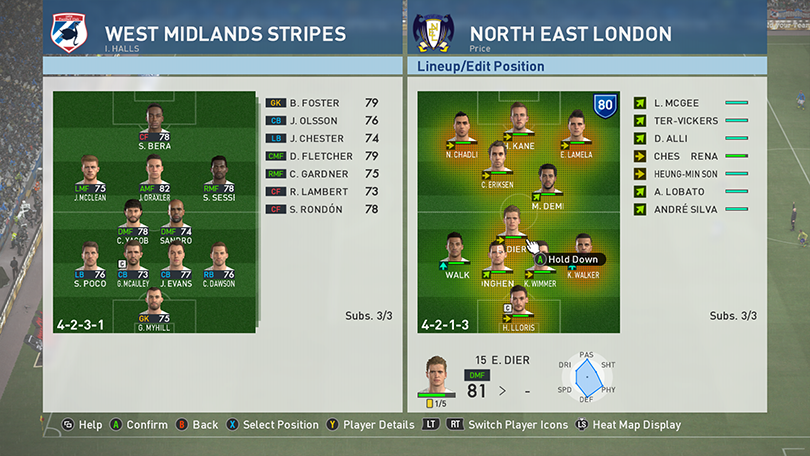
A bespoke custom formation designed for the mighty North East London in Master League. The asymmetrical shape of the midfield may look odd, but it complements each player’s role. Eriksen is assigned as an AMF and operates as a classic number 10, with his advanced position ensuring that he doesn’t drop too deep when out of possession. Dier is the anchor man: a DMF who shields his back line as the team defends, and acts as a vital pivot in build-up play. Meanwhile, Dembele’s position and CMF designation sets him up perfectly to make shuttle runs, supporting Eriksen and Dier as required.
Use the Attack/Defence Level Feature
In FIFA, you switch between different levels of attacking and defensive focus by double-tapping left and right on the directional pad. In PES, you instead double-tap up (attacking focus) or down (defensive focus); you can see the gauges that indicate current levels to the left and right of the player name plates at the bottom of the screen. Don’t overlook this feature. If you find yourself short-handed in attack, knock it up a notch to commit players further forward; if you’re weathering a storm, drop it down to put more bodies behind the ball. The highest and lowest settings are best used in the closing minutes of matches to either besiege your opponent’s area (with at least one centre-back joining the attack) or attempt to shut up shop by pulling everyone back into your half.
Start a Master League Career
Playing in Master League lends absorbing, all-important context to the strengths of PES 2017’s match engine
Master League is the PES career/team management mode, and it’s a real time-sink, a rabbit hole from which you’ll be reluctant to emerge once you commit to a team and make a few promising signings. It’s almost certainly the best way to get to grips with the many ways in which PES differs from FIFA, gradually adapting your playstyle to suit its demands.
Playing in Master League lends absorbing, all-important context to the strengths of PES 2017’s match engine. Bully the Liverpool back line into match-losing mistakes with your own interpretation of Gegenpressing on a sunny Saturday afternoon at Anfield, and you feel like a genius. But when you conspire to drop points against ‘ST Red’ on a wet Wednesday evening after a late aerial barrage, it’s hard not to get genuinely deflated. It doesn’t matter that all the kits or rosters or team names aren’t what you’d ideally like: Master League just feels *right*.
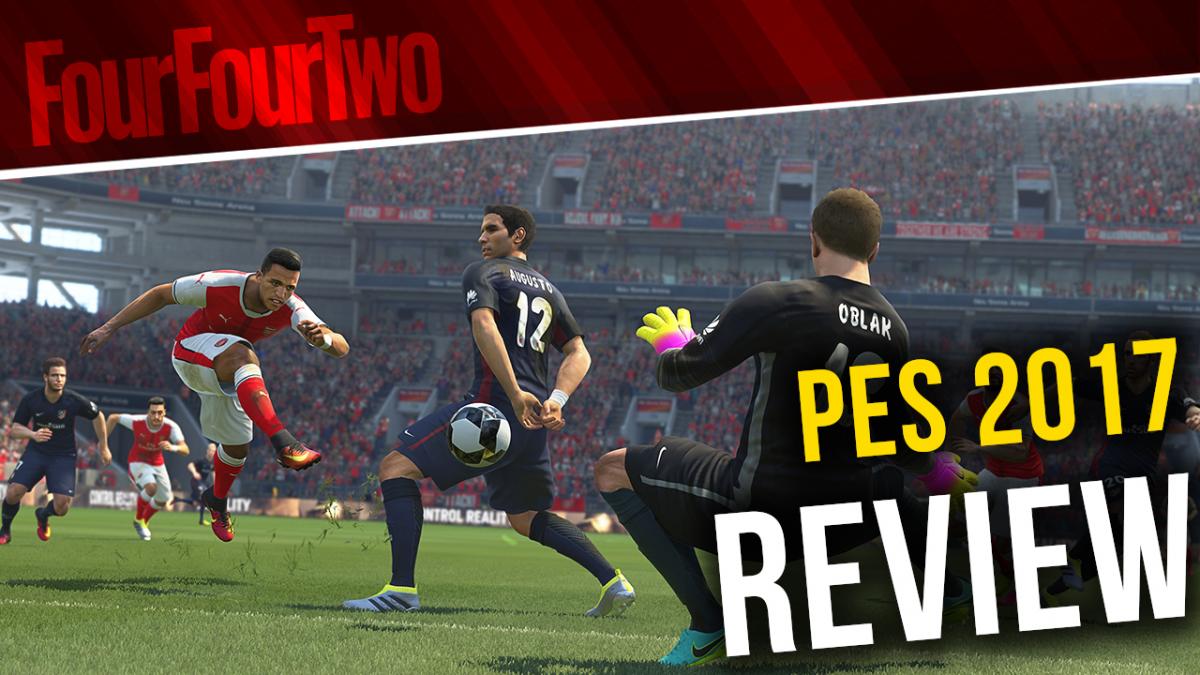
If you’d prefer a more informal and aspirational approach to team-building than the broad and hour-devouring simulation of Master League, MyClub is the PES response to FIFA’s Ultimate Team. We can’t vouch for its bona fides at this stage, as the online servers have only been active for just over a day at the time of writing. It does appear to adopt a different and perhaps preferable approach to squad building than UT: rather than starving you of marquee signings until you break and binge on microtransactions at great expense, it instead restricts the maximum potential of your fantasy squad by gating assorted essential resources.
There is also, of course, the power and pageantry of the official Champion’s League licence but, actually, the trappings and trimmings of the various play modes is ultimately of secondary importance to the quality of PES 2017’s match engine and tactical flexibility. It’s the general feel and variability of events on the pitch that gives the different campaign setups real meaning and value.
And that’s why you should at least try it, FIFA fans. What do you really have to lose?
